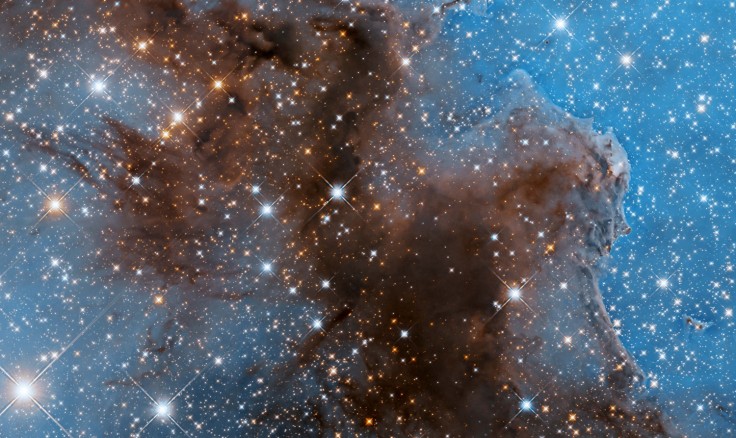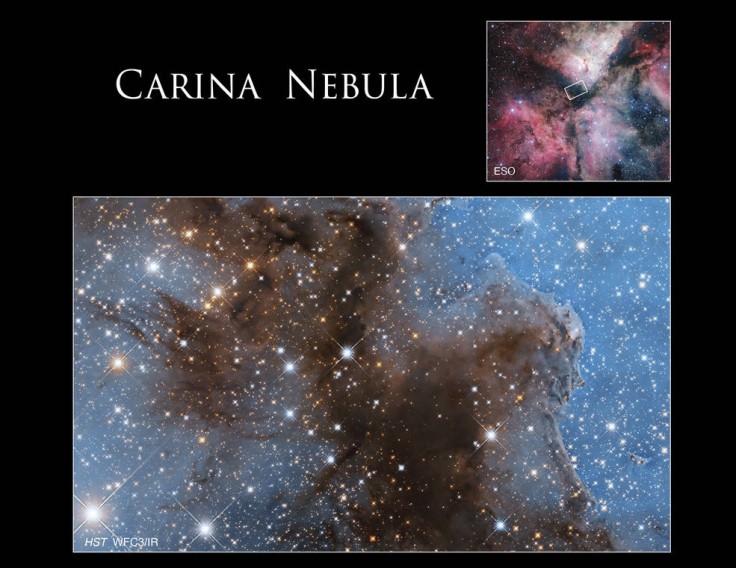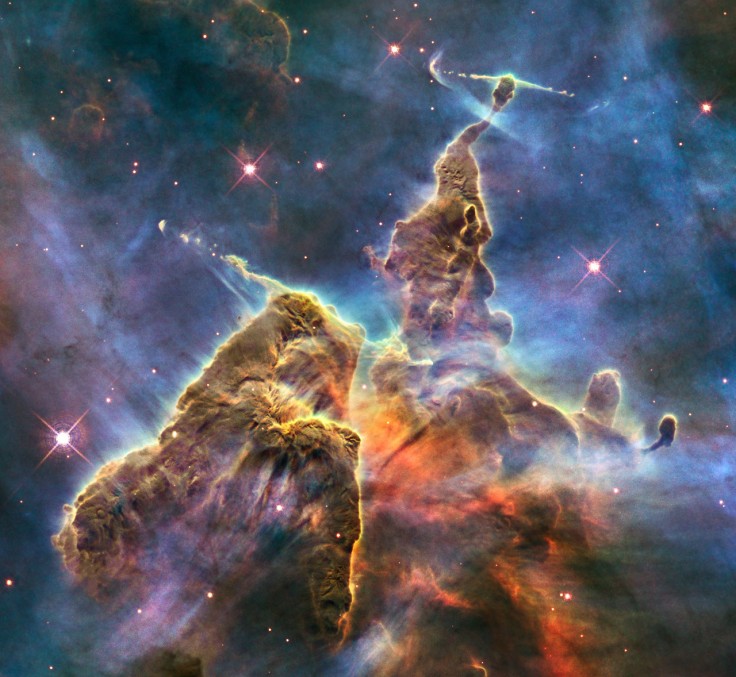NASA has a new picture of the Carina Nebula for all to see.
The space agency recently released a new picture featuring a new view of NGC 3372, also known as the Carina Nebula, one of the most popular birthplaces of stars.
You may remember that NASA and the ESA took photos of the Carina Nebula's Mystic Mountains, which contain newborn stars, for Hubble's 20th anniversary.
Carina Nebula New View Picture Details

NASA mentioned in its blog post that scientists relied on Hubble's infrared light imaging capabilities to take the pictures it published since it detects longer wavelengths of light unscattered by the heavy dust and gas surrounding the stars within the nebula.
According to the space agency, as stars form and produce ultraviolet radiation, their stellar winds disperse the gas and dust around them which sometimes form dark, dusty clocks. Sometimes, these stellar winds even create empty patches for the stars to become clearly visible to telescopes like Hubble.

Due to the Carina Nebula's size, Hubble needed to takepictures of it section by section and piece them together to get a full picture. For those unaware, the Carina Nebula is about 300 light-years big, making it visible enough to the naked eye from Earth's southern hemisphere.
The picture NASA released is just a part of the Carina Nebula, albeit using a new view that showcases the many stars within and without it beautifully shining in the vastness of space.
Facts About The Carina Nebula
The Carina Nebula, which is also known as the Grand Nebula, the Great Nebula in Carina, and Eta Carinae Nebula, was discovered and named by French Astronomer Abbe Nicolas-Louis de Lacaille in 1752, per The Planets.
The nebula itself is one of the largest of the large, diffuse nebulae and is highly likely to be the birthplace of many stars due to the level of dust and gaseous matter within it. As such, it is one of the best nebulae to study for aspiring and established astronomers due to its brightness, location, and diversity.
As a result of its popularity to both amateur and established astronomers, the Carina Nebula is also Hubble's most-imaged object.

One of the most popular features of the Carina Nebula is the Mystic Mountain, located 7,500 light-years away in the southern constellation of Carina. It was formed due to the radiation and fast "winds" or streams of charged particles from super-hot newborn stars in the Carina Nebula shaping and compressing the pillar, causing new stars to form within it.
A visible-light view of the Mystic Mountains features streamers of hot ionized gas following off the mountains' ridges, along with wispy veils of gas and dust. The denser parts of the pillar contain the newborn stars, which can be seen in the near-infrared-light image from The Hubble Space Telescope.
The Space Telescope Science Insititute described this pillar of gas as "wispy clouds [looking] like a bizarre landscape from Tolkien's 'The Lord of the Rings' or a Dr. Seuss book."









